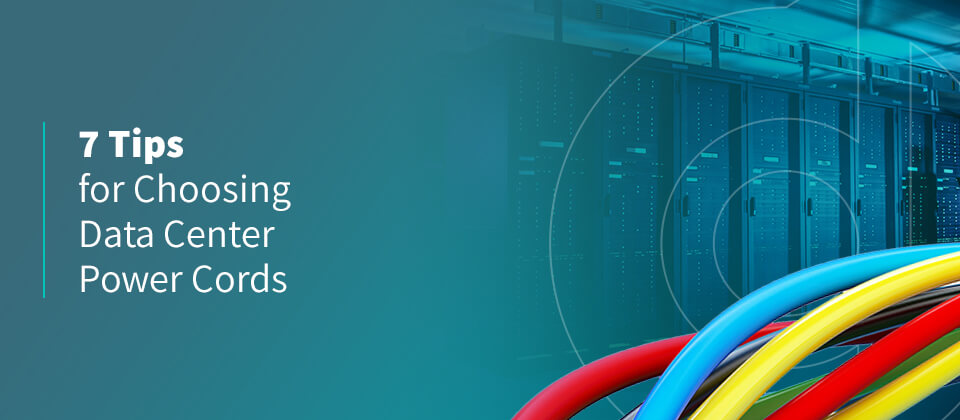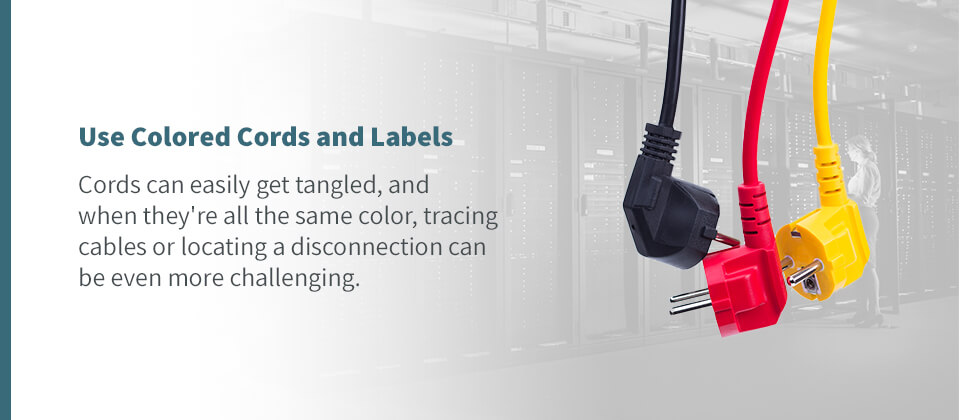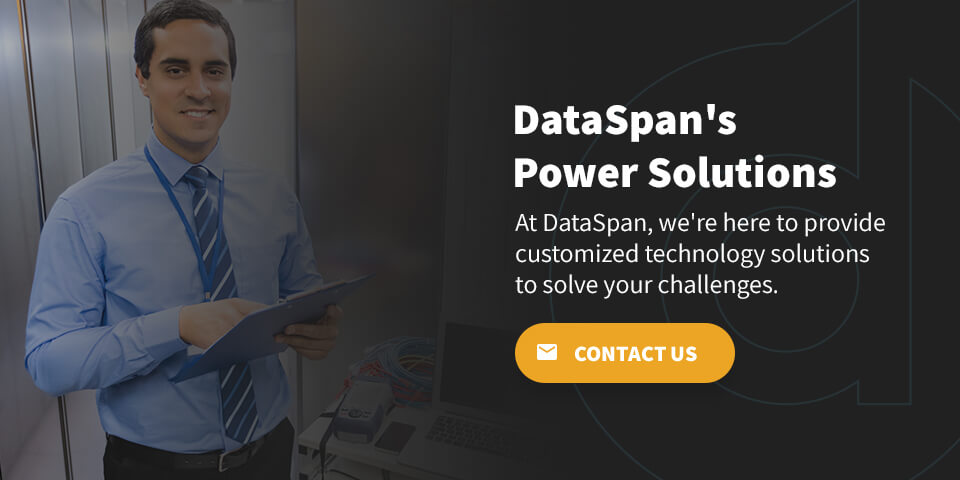7 Tips for Choosing Data Center Power Cords

Data centers are a hub of connections vital to the success of your business. Choosing proper power cords makes a significant difference in your data center’s installation, management and functionality. Tangled cables look messy and unorganized, making resolving issues a time-consuming task. Additionally, your power cords can affect how your equipment operates.
Because the power cords can affect numerous aspects of your data center, choosing appropriate power cords is essential. To ensure you’re looking for the right power cord features and characteristics, consider these seven tips for choosing the right data center power cords.
The Importance of Proper Cable Management
Data centers house computer systems, their related components and data, which are essential to the everyday operations of businesses and organizations. Properly managing numerous aspects of a data center ensures the system runs smoothly. One of the most important aspects to consider is data center cable management.
The sheer number of cables and power cords necessary for operating a data center means there is a lot of potential for errors and issues in the infrastructure. Improper data cable management can lead to higher operating costs, outages and even fires. Planning the infrastructure and determining the proper power cables for data centers will save time and money and help prevent common issues.
7 Tips for Choosing Data Center Power Cords
Choosing the best power cords for your data center helps ensure strong and stable connections. The right cord selection can make a difference in terms of cost and performance, so it’s best to make an informed choice. Consider these seven tips when selecting power cords for your data center.
1. Know the Equipment You’re Using
To choose the right power cords for your data center, you need to understand the equipment. The wrong power cords can damage your equipment, so knowing the maximum power voltage and the connector type is essential. You’ll want to choose cords that won’t exceed the equipment’s maximum power voltage, as this can result in overheating. Additionally, calculate the total power before connecting cords and plugs if you’re connecting multiple devices.
You’ll also need to pay attention to the type of connector the equipment has, which will determine the specific type of power cord you need to get. There are standards and specifications for power cords and related components that vary depending on the country, so be sure to pay attention to that when choosing your cords.

2. Use Colored Cords and Labels
Cords can easily get tangled, and when they’re all the same color, tracing cables or locating a disconnection can be even more challenging. Keep high-density cables organized and save yourself time using different colored cords and labels. Designate specific colors for different types of cords and create labels to make it easier to find the other end of the cables. Labels can be as detailed as you like, and it can be helpful to include information like its type, length and what it’s connected to.
3. Select Suitable Cord Length and Gauge
The cord length and gauge determine the cord’s ability to carry a current, or its load capacity. In general, as you increase the cord length, the power it can deliver decreases. Opt for shorter cords where possible to prevent overheating a long cord and reduce power loss.
Similarly, the cord gauge indicates the cord’s capacity. The United States uses American Wire Gauge (AWG) units to measure the size and capacity. A low AWG indicates a larger size and higher capacity. For example, 8AWG cords are thicker and can carry more current than 14AWG cords.
4. Use the De-Rating Approach
The cable load in applications like data centers is continuous, meaning the equipment is on for more than three hours. The National Electric Code (NEC) requires that wire sizes and amperages be de-rated for continuous load applications. For example, if a cable was rated for 100 amps, you should avoid running more than 80 amps through the cable. This approach is a best practice because it helps prevent overheating, which can lead to fires and shortages.
5. Choose an Appropriate Cord Jacket
The cord jacket shields the cable’s conductor from harmful conditions. Common jacket types in North America include SJT, SJOW and SJTW. There are several types of cord jacket materials, so you should consider the cord’s temperature, the environment and how flexible you need the cord to be. For example, SJT jackets are PVC insulated and mainly used indoors. Consider your application to determine the most effective cord jacket for your cables.
6. Choose a Reliable Conductor
The conductor within a cable consists of the path a current follows. Two of the most popular conductors include copper-clad aluminum (CCA) and oxygen-free copper (OFC). While these conductors are similar, OCF cables are typically thought of as the better option for data centers. While OFC costs a bit more than CCA, OFC offers more reliability and power quality — two things you shouldn’t sacrifice.
7. Save Space With Angled Connectors
Angled connectors can help improve airflow and save space in your data center. With options ranging from right, left, up, down and 45-degree-angle connections, angled connectors help organize high-density racks. When racks and servers get overcrowded, they can easily overheat. Angled connectors create space for air to flow and cool down your servers. Plus, they help reduce the chance of a power cord getting disconnected when working in these high-density areas.
DataSpan’s Power Solutions
Structured cabling is one of the best ways to manage your data center. Structured cabling solutions from DataSpan involve organizing your systems into smaller subsystems that allow for easy-to-find and manage connections. Structured cabling also improves reliability, powering, scalability and cooling. With our high-quality, custom cabling, you’ll gain flexibility, efficiency and more best practices to ensure your data center operates smoothly.
At Data Span, we can offer custom engineered solutions and products, maximized connection performance, on-site support and many more services and products.
Learn More About Us Today
Every business and organization faces unique challenges. At DataSpan, we’re here to provide customized technology solutions to solve your challenges. From data centers and physical IT infrastructure to cloud solutions and storage, we’ll optimize your solutions to meet your needs. With over 45 years of industry experience and long-lasting partnerships, we’re a reliable choice for our growing list of clients.
For more information about our products, services and power cable FAQs, contact our team of representatives today.

About the Author: Alex von Hassler’s long term focus is the continued testing, learning, and deployment of modern IT solutions. During his years as a DataSpan team member, his responsibilities grew from managing Salesforce CRM to improving system security, creating marketing initiatives, as well as providing continued support to the highly motivated and experienced team in an ever-changing industry. As DataSpan evolves to provide the best-fitting IT solutions to its customers, Alex von Hassler continues to hone his skills in the world of web-based ERP systems, security, and best customer engagement practices. Empowering such a dynamic team with the right tools provides him with enormous gratification.








